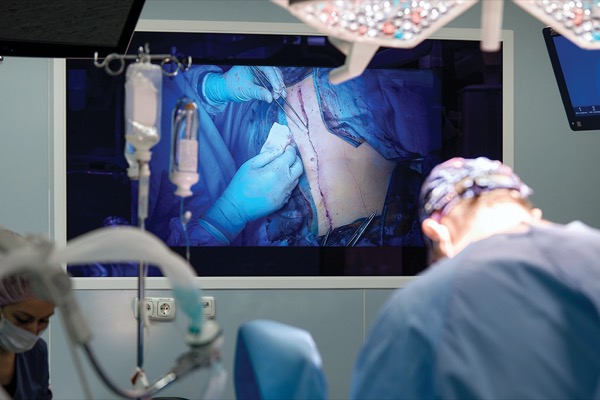Findings from a recent survey of the Surgical Infection Society have highlighted variability in practice patterns among surgeons when treating suspected incisional surgical site infections.
Results of the study, presented at the 2023 annual meeting of the SIS, showed lower rates of observation, increased use of antibiotics and increased surgical drainage when presented with scenarios of escalating concern for SSIs. However, many scenarios lacked consensus regarding appropriate therapy.
According to the study authors, these findings indicate potential opportunities for standardization in management, which may lead to improved patient outcomes.
“These findings highlight the need for further research and collaboration among surgeons and other healthcare professionals to better understand the factors that influence the management of suspected incisional SSIs, and to develop evidence-based guidelines or protocols that may lead to improved patient outcomes and reduced complications,” said lead study author Patrick Delaplain, MD, a clinical fellow in pediatric surgery at Boston Children’s Hospital.
Due to the associated morbidity, mortality and cost, surveillance of SSIs has become mandatory, but wound management and use of antibiotics still vary widely among surgeons. Furthermore, said Dr. Delaplain, there is little guidance, or even established consensus, regarding when empirical therapy for superficial SSIs should be initiated and what that therapy entails.
For this study, Dr. Delaplain and colleagues investigated the interplay of variables that may influence surgeons’ decisions in managing suspected incisional SSIs. Factors such as wound appearance, initial wound classification, postoperative day and presence of prosthetic were examined through a survey distributed among the SIS members. The survey featured case scenarios, with respondents given 10 potential treatment options.
As Dr. Delaplain reported, analysis of survey data revealed several clear trends. For example, the degree of erythema and character of drainage were found to be essential factors in incisional management. As erythema increased or purulent drainage developed, said Dr. Delaplain, surgeons were more likely to treat with broad-spectrum antibiotics and partially or fully open the wound.
“Interestingly, the initial wound classification did not seem to affect the management decisions, despite the potentially higher risk of SSIs,” Dr. Delaplain added. “However, the presence of mesh significantly altered management decisions, making surgeons more likely to administer gram-positive antibiotics, use broad-spectrum antibiotics, obtain cross-sectional imaging and opt for the operating room over the opening of the wound.”
Despite these trends, variability among individual surgeons remained, with no single treatment option garnering more than 64% of respondents’ approval.
“These findings raise questions about whether the management of incisions impacts long-term patient outcomes, and if so, whether standardization could lead to better results,” said Dr. Delaplain, who emphasized that the results should be considered hypothesis-generating. “Further research is needed to answer these questions and explore the potential benefits of consistent management in treating suspected SSIs.”
Discussant of the abstract, John E. Mazuski, MD, PhD, praised the efforts of the Scientific Studies Committee in developing surveys to understand the current knowledge and areas of uncertainty surrounding the management of SSIs. Despite the large amounts of data available on SSI prevention, Dr. Mazuski said, a lack of consensus remains on how to treat SSIs once they occur.
Regarding diagnosis, Dr. Mazuski questioned whether the survey results revealed any consistency with the National Healthcare Safety Network criteria for SSIs, which include purulent drainage, wound opening due to symptoms and certain chart documentation.
“I wonder if the survey scenarios showed more consistency with these criteria or if they were more aligned with the more ambiguous ‘think it might be, and therefore it is’ approach,” he said.
In terms of treatment of SSIs, Dr. Mazuski referred to the FDA’s criteria for acute bacterial skin and skin structure infections, which specify a minimum of 5 cm of erythema for antibiotic treatment indication.
“The survey results suggest a tendency to use antibiotics when greater amounts of erythema were present,” Dr. Mazuski said. “However, the consensus among the SIS members was not particularly strong, even with established criteria.”
Finally, Dr. Mazuski noted the possibility of different responses from community physicians versus SIS members.
“It would be interesting to investigate whether their judgments are better or worse than SIS members,” he said.


